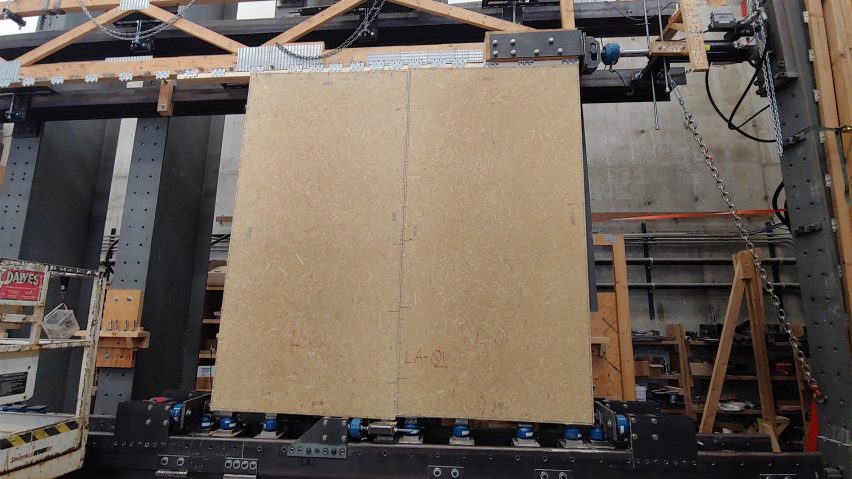North Carolina firm Plantd Materials has developed a material consisting of processed perennial grasses that it says will be lighter and stronger than traditional timber boards while capturing more carbon.
Called Plantd, the material is a "blend of fast-growing perennial grasses" that the company aims to produce as a replacement for a traditional oriented strand board (OSB), a plywood-like material used for sheathing walls and floors.
Plantd Materials created a set of machinery that uses heat and pressure to press shredded grass into panels. It allows the creation of standard four-by-eight-foot (1.2 by 2.4 metre) panels that use about 50 pounds (22.6 kilograms) of grass.
"During the pandemic, quality was going down, prices were going up, supply was obviously constrained and I really started thinking a lot more about sustainable materials as an opportunity," said Plantd co-founder Josh Dorfman.
"We had this frame in mind to aspire to gigaton scale carbon capture, to be able to lock something away for 100 years," he told Dezeen, adding that he was inspired to create the product by Xprize's Carbon Removal initiative.
Dorfman, who founded the company with former SpaceX engineers Huade Tan and Nathan Silvernail, believes that the material has the potential to "solve some real problems for builders" in the residential market.
According to the company, one positive impact will be land usage. Plantd Materials uses perennial grass which grows faster than timber.
Dorfman said that manufacturers need 140 to 150,000 acres of managed timberland to feed a medium-size OSB mill, while mills that use perennial grass will be able to function on 15 to 20,000 acres.
"So it creates an opportunity to capture more carbon using less land, and because it regrows on the same land year after year to be able to do it much faster."
"On a per acre for a perennial grass, you will get a yield that can be roughly seven to eight times more per acre than with managed timberland," Dorfman told Dezeen.
Plantd Materials claims that not only is the material lighter and stronger than timber-based OSB, but also that its production will emit less carbon.
It said that its custom machines will be more energy efficient and will run on 100 per cent electricity.
"Twenty-five per cent of a tree is burned in the mill along with natural gas to dry out the remainer of the tree," said Dorfman.
"We bypass that process in the way that we produce. And so by moving to 100 per cent electric, it enables us to really get these tremendous gains in terms of carbon efficiency."
According to Dorfman, the panels will be treated with flame retardant through a similar process as is standard in energy, and Plantd Materials has received preliminary approval for use as roof panels.
He also noted that the machines the company is producing could potentially be used for more intensive engineered wood products such as cross-laminated timber.
Plantd Materials has recently received a round of funding and the company said it hopes to start working on prototype structures using the material in the next year.
Other innovative building materials include bricks that use municipal waste products and MIT and Harvard's re-discovery of the Roman method for producing self-healing concrete.

